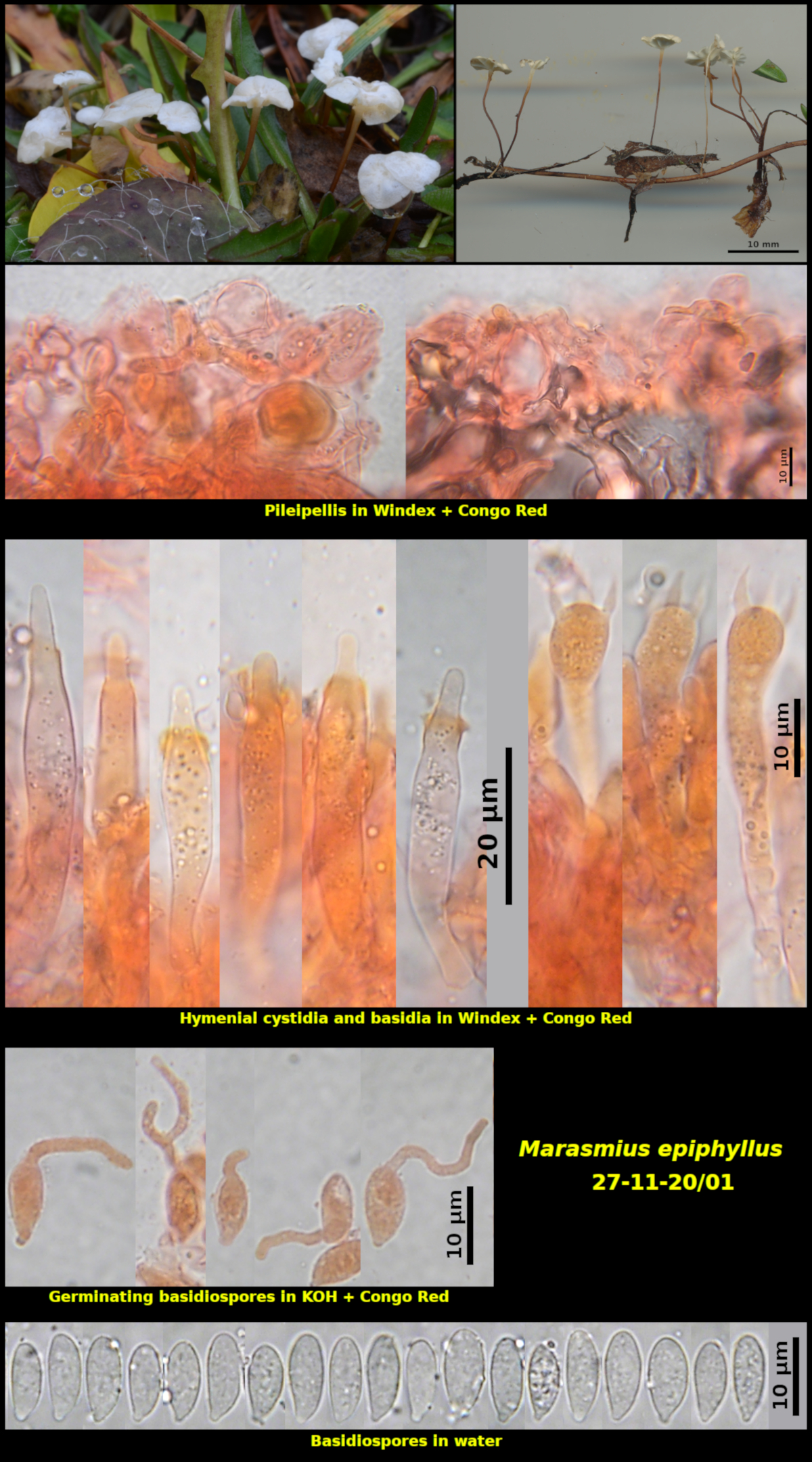Fleshy Fungi of New Brunswick >>
Marasmius_epiphyllus
Marasmius epiphyllus (Pers.) Fr.

Gregarious (many) on dead plant material, associated with Taraxicum and Hieracium spp. in a weedy lawn – often growing on the dead tissues of the Taraxicum and Hieracium, Little Lepreau, New Brunswick (27-11-20/01).
Pileus broadly convex at first and at maturity, depressed at the centre, with margin uplifted in age, plicate, smooth, dry, glabrous, white, 3.5-6.0 mm in diameter. Stipe equal, white at the immediate apex and then grading down from very light brown to dark red brown (HSV15:60:20-30) at the base, finely pruinose at the apex, glabrous below, dry, tough, 12-18 X 0.2-0.5 mm. Lamellae white, distant, adnate to subdecurrent, not marginate. Flesh concolorous with the surface tissues, lacking a distinctive odour and taste.
Basidiospores white in spore print, narrowly dacryoid, smooth, inamyloid, 8.7-11.7 x 3.8-5.2 µm, Q = 2.00-2.76 (average[39]: 10.2 x 4.2 µm, Q = 2.43), with a broad apiculus 0.5-1.0 µm in length, tending to form adherant clusters in water mounts, frequently germinating within 12 hours in spore prints made on glass slides. Hymenial cystidia scattered on the sides and margins of the lamellae, narrowly ventricose, often with flaring material below the apex that stains strongly in Congo Red, with a basal clamp connection, 36-50(62) x 5.7-7.1 µm. Pileipellis a loose layer of interwoven hyphae and subglobose to globose cells, with swollen cells smooth and measuring about 10-24 x 9-18 µm.
Recognized by its white pileus, weakly developed lamellae and brown wiry stipe. The smooth cells of the pileipellis separate it from most other small species of Marasmius.
Photograph: D. Malloch (27-11-20/01).